
|   |

|   |
 e-mail: ukb7@rediffmail.com The theatre colossus I knew August 17, 2020 The demise of Ebrahim Alkazi, the titan of Indian theatre, seems to have occurred, for many, much too soon, even when he was just turning into 95. His contribution to the histrionic arts, have been immense. And, after one counts his oeuvre in paintings, photography, art collection and his lifelong art-curating work, one is left speechless. His disciplined approach, meticulous attention to details, synoptic view of the arts and concomitant aesthetics has been the stuff legends are made of. 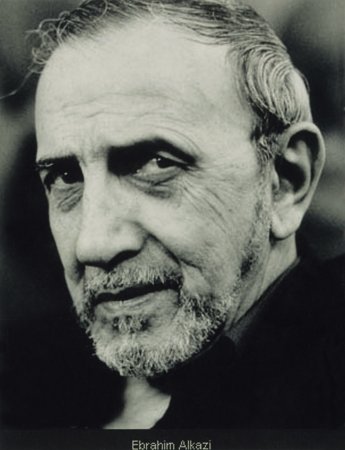 E. Alkazi Image courtesy: Amit Mehra With superbly crafted stage productions to his credit, Alkazi used both proscenium stages and the open-air venues. His designs for the open-air milieus were acclaimed for their visual imagery and for the original spins he put on each stage production. Including those he had previously directed before. He directed over 50 plays. My acquaintance with him has been threefold: as a bemused spectator of his Gothic productions at Purana Qila, to start with; then as an ardent devotee to his directorial work at the helm of affairs at National School of Drama (NSD) and its Repertory; later, at the Heritage Art Gallery from surprisingly close quarters; and finally, attempting to revive his passion for theatre by founding the Living Theatre with his own money, before he had left Delhi and, later, presumably India, perhaps for his ancestral place of Iran. 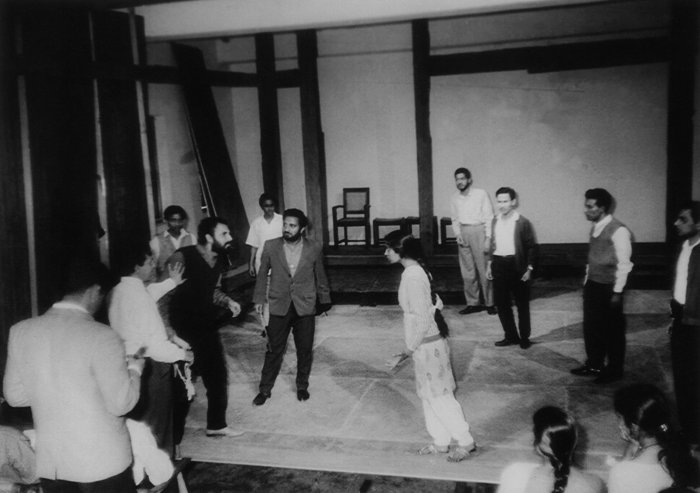 E. Alkazi at the rehearsal of 'King Lear', National School of Drama, New Delhi, 1964 Courtesy: Alkazi Theatre Archives The Old Fort spectacle Purana Qila (Old Fort) has been a heritage site of Delhi on the banks of Yamuna river. One of the oldest forts in Delhi, the site was continuously inhabited for some 2,500 years and the remains have been excavated dating from the pre-Mauryan era. Although surrounded by many theatre stages -- like Hamsadhwani, Falak Numa, Kamani, Shri Ram, Triveni, Avimanch and others - Purana Qila itself became the site of some splendid theatrical spectacle with Alkazi's insight in the beginning of 1970s. Early on in his career, he had been associated with the Bombay Progressive Artists' Group, which included luminaries like M.F. Hussain, F.N. Souza, S.H. Raza, Akbar Padamsee, Tyeb Mehta, who were later to paint from his plays and design his sets, and some of whom even migrated to Delhi with him. Under their imaginative inspiration, Alkazi mounted a rare theatrical feast in 1974 -- with his gifted students from the NSD in the cast -- which remain etched in my memory for ever. 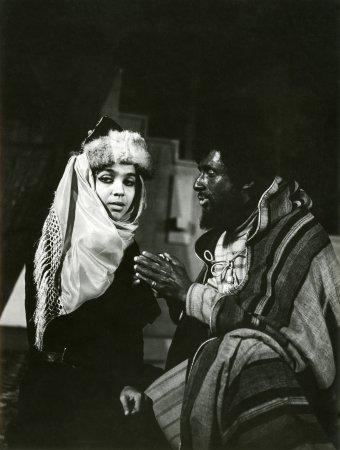 'Razia Sultan' by Balwant Gargi, Dir. E Alkazi, National School of Drama, Purana Qila, New Delhi, 1974 Courtesy: Alkazi Theatre Archives Razia Sultan focused on the life of Razia Sultan, made the ruler of Delhi by Sultan Iltutmish himself. In spite of having many sons, he had felt that Razia would make a more capable ruler. The play focused on the 13th century India and Razia's struggles and dilemmas as a Sultan, and as a woman in daily life. An excellent administrator, and a brave warrior like her father, she had her deeds saved in the pages of history, in spite of the fact that she ruled only for three years. Tughlaq, a 1964 Kannada play written by Girish Karnad, was a thirteen scene drama set during the 14th century reign of Muhammad bin Tughlaq, known as the Mad King of Delhi. He had the hair-brained idea of shifting the capital of his sultanate from Delhi to Daulatabad -- with all its retinue of officials and citizens - despite enormous hardships, to save the depredation of his kingdom from the marauding Mongols, and later, reversing the whole process over again. His other madcap idea was to introduce copper and leather coins to replace the imperial gold and silver ones, and thereby save the precious metals. Rampant forgery depleted the treasury and ruined the economy. Manohar Singh made the most majestic, quirky Tughlaq. Andha Yug (The Blind Age) was a 1953 verse-play, in Hindi, by the renowned novelist and poet, Dharamveer Bharati. Set in the last day of the great Mahabharata war, the five-act tragedy was written in the years following the 1947 Partition atrocities as allegory to its destruction of human lives and ethical values. It was a metaphoric meditation on the politics of violence and aggressive selfhood; that war dehumanized individuals and society; and that both the victor and the vanquished lose eventually. Surekha Sikri's stentorian voice, as the blind-folded Gandhari on stage, uttering an epic curse on the invisible Krishna to suffer most ignobly to end of his life, and Krishna's humble acceptance of the bereaved Kaurava mother's curse, reverberated in the vast amphitheatre of the open-air auditorium -- ringing in my ears still. 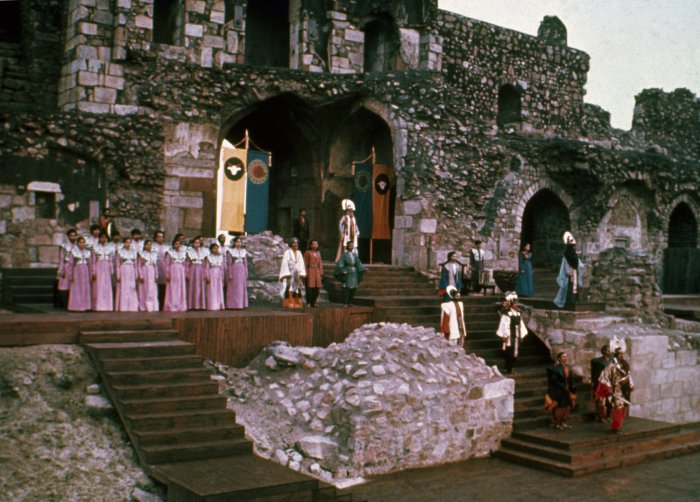 'Andha Yug' by Dharamveer Bharati, Dir. E Alkazi, National School of Drama, Purana Qila, New Delhi, 1974 Courtesy: Alkazi Theatre Archives The NSD Oeuvre It was unfortunate that the founder-director of NSD, Sotu Sen, a highly qualified light designer and set expert trained in the USA, could not stay beyond 1959-61 under personal circumstances, although he later went ahead to devise the technical wizardry of 'Cicarina' and Rangmahal's revolving stage in Kolkata. Alkazi took up the reins of NSD in 1962, had an eventfully long stay of 15 years till 1977 and changed the institution's bulwark, lock, stock and barrel. Alkazi revolutionized Hindi theatre (never doing another English production unlike his Mumbai days) by the magnificence of his vision, and the meticulousness of his technical discipline. Here he was associated with training many well-known film and theatre actors and directors including Vijaya Mehta, Om Shivpuri, Harpal Tiwana - Neena Tiwana duo, Om Puri, Balraj Pandit, Naseeruddin Shah, Manohar Singh, Uttara Baokar, Jyoti Subhash, Suhas Joshi, B. Jayashree, Jayadev and Rohini Hattangadi. While at NSD, he created the Repertory Company in 1964 and directed their productions until he left. Two of his Repertory plays are etched forever in my memory. Staged in the claustrophobic Studio Theatre in Rabindra Bhavan by NSD Repertory, Look Back in Anger was a realist play written in 1956 by John Osborne. It focused on the life and marital struggles of an intelligent and educated, but disaffected young man of working class origin, Jimmy Porter, and his equally competent yet impassive upper middle class wife Alison. The play spawned the term "angry young men" to describe Osborne and those of his generation who employed the harshness of realism in the theatre, in contrast to the escapist fare that characterized the previous generation. The brazen roughness and even crudity of modern life - particularly with marked class distinction -- led to Look Back in Anger being considered one of the first examples of "kitchen sink drama" in theatre, brought out in full force by Manohar Singh and Surekha Sikri in their vituperations and angst laden outbursts, followed often by passionate reconciliations on bed. 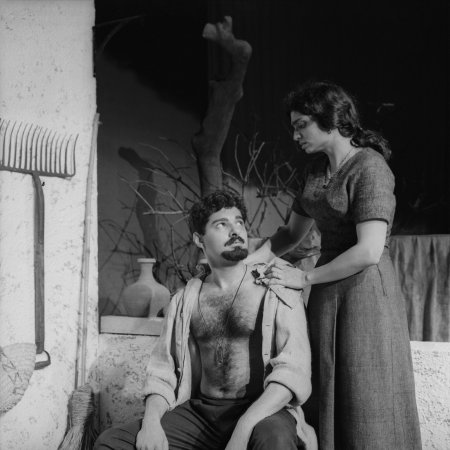 'Yerma' by Federico García Lorca, Dir. E. Alkazi, Theatre Unit, Bharatiya Vidya Bhavan, Bombay, 1960 Courtesy: Alkazi Theatre Archives The second play, Garcia Lorca's Yerma, was another NSD Repertory presentation (staged at Meghdoot Theatre built by Alkazi as an outdoor open amphitheatre in the Rabindra Bhavan garden), presented by him almost as a Pagan theatre with manifest ritualistic dimensions. Penned in 1934, the play portrays a childless woman living in rural Spain, whose desperate desire for motherhood becomes an obsession that eventually drives her to commit a horrific crime, namely, strangling her husband. Yerma deals with the themes of isolation, passion and frustration -- as also the underlying themes of nature, marriage, jealousy and friendship. The protagonist Yerma (the name meaning barren) is a young woman married to a much older Juan out of honor and duty to her father. She is surrounded by a society that feels that women have only a duty to their husband to provide offspring and the town's people blame Yerma for her inability to conceive. It is hinted that she may have feelings for another, but she refuses to express them because of a strong sense of duty to her husband. Even when the old woman tells her that she has a very fertile son that she could "go with", Yerma refuses by replying, "Do you imagine that I could know another man? And what an idea you have of my honor!" Her feeling of honor is so overwhelming that, even after she has killed her husband, she cannot marry anyone, since her fidelity was to Juan, no one else. In Alkazi's interpretation, there were also themes of power and struggle permeating the play's entire fabric. The Heritage Art Gallery After 1977, one found him gradually settling down with his other love, namely, the fine arts, by establishing Heritage Art Gallery at the Triveni Kala Sangam conjointly with his wife. He had a spacious studio downstairs at Triveni. Surrounded by his art collection and dealing with art dealings with connoisseurs and art lovers, he looked quite relaxed. I inched near him there -- and he would give me ample share of his time -- over a pet project of mine - 'Training and Pedagogy in Indian Theatre.' Under his mentorship, I keenly wanted to work out my ideas of initiation into the Dionysian art; the need to be acquainted with Indian classical theatre from Natya Shastra (especially Chapter 10) and classical dramaturgy connected with Kutambalams (the ancient proscenium stage); theatre's links with Yoga as an art form; the rich store house of the "Golden Century" of Greece, with its half a dozen thespians on tragedy and comedy; the need to understand theatre's relations with stage settings, costuming, make-up, lighting and other applied arts; and, finally and most importantly, the myriad forms of performance texts, movement training, voice projection, choreography and the theatre movement and developments across UK, USA, USSR and Germany. Very gently, he guided me to formulate my proposal for the likely acceptance of the India Foundation for Arts (IFA) in Bangalore. I planned an interview based schedule with the bevy of theatre directors I knew in Delhi and Kolkata. Unfortunately, I was unaware of IFA's very important criteria of applied projects and my proposal, therefore, remained still-born. But I would always cherish the encouragement and affection of Alkazi Sa'ab shown to this rank outsider into his theatre world (laced always with steaming cups of coffee ordered from the upstairs cafeteria!). The Living Theatre In 1989 end, Alkazi founded the Living Theatre, at the Little Theatre Group (LTG) in collaboration with its management. This was a return to his own first love, absolutely with own funds and even scholarships paid to students from his own pocket. This training-cum-performance institution ran for over 5 years and remains the least known of all his enterprises. His meritorious students included Jayanti Bhatia, Meghna Kothari, Subhra Khanna (a theatre director now) and others. There, almost meticulously crafted, he mounted almost two student productions every year. These included Birasat (in 3 parts) by Mahesh Elkunchwar; A Street Car named Desire by Tennessee Williams; Three Sisters by Anton Chekov; Royal Hunt of the Sun by Peter Shaffer; the Greek tragic trilogy of Iphigenia, Electra and Agamemnon; Death of a Salesman by Arthur Miller; and finally, Desire under the Elms by Eugene O'Neill. The Living Theatre was discontinued thereafter, what with Alkazi's other preoccupations with arts (he was also running an art gallery in the vicinity of New York); his financial discomfiture; or for eventual disillusionment with the capital's theatre milieu, one would never know. But Alkazi remains alive and shining in India - apart from anything else -- in the galaxy of stellar directors that he groomed at NSD. They include, among others, Ratan Thiyam of Manipur, Mohan Maharshi of Delhi, and Rita Ganguly-Kothari of Delhi and Kolkata. The ultimate import of stylization and symbolism of Thiyam, the biting banter and the realist flavor of Maharshi, and the touching classicism and ancient splendor of Ganguly-Kothari -- among a host of other reigning theatre luminaries -- owe their finesse and honing of talents to Alkazi Sa'ab in the ultimate analysis.  Dr. Utpal K Banerjee is a scholar-commentator on performing arts over last four decades. He has authored 23 books on Indian art and culture, and 10 on Tagore studies. He served IGNCA as National Project Director, was a Tagore Research Scholar and is recipient of Padma Shri. Post your comments Please provide your name and email id when you use the Anonymous profile in the blog to post a comment. All appropriate comments posted with name and email id in the blog will also be featured in the site. |